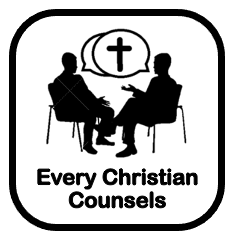‘Power and control’ is at the heart of abuse. One day, I snapped at my son – I yanked and sprained his elbow. He cried. What I did was an abusive incident but I wasn’t abusive. I was physical and I did harm my son. I was acting strongly in a sinful way. But I did it out of anger towards my son’s disobedience, not out to gain power and control over my son.
Abuse has a pattern. It is driven by a desire to keep someone under control. Abuse is often carried out to feed one’s ego and desire to feel powerful. Whether it takes the form of physical or emotional or economical, abuse aims to make the abused party feels progressively powerless and controlled. Abuse has a pattern because it has an underlining strategy to gain increasing control and power through intimidation, name-calling, manipulation, coercion, minimising, threat, isolation, humiliation or condescending. Abuse may not manifest itself in angry outburst though it usually does. For instance, an abusive husband can manipulate his children against their mother, without angry shouting. Or an abusive father can use fear to gain control over his child with threats, without lashing out physically or with angry outburst. At the heart of abuse is taking power away from the victims. So much that the abused victim does not even have power to break the abusive relationship.
Given the progressive nature of abuse, early recognition and exposure of any form of abuse by the church is imperative. An abuser may take three incidents over ten years before he finally blatantly harm. But the abusive heart would have manifested in the first episode with a seemingly harmless uncaring shove. So, while someone in church minimise such abusive behaviour (e.g. that’s just him, he is a rough guy), the church must not. While the church does not want to jump to conclusions and falsely accuse, the church needs to be prepared and willing to probe carefully. Early recognition and exposure can help prevent escalation of spousal abuse. The church ought to adopt a zero tolerance to abusive behaviour outlook to help us call a spade a spade when it appears.
If an abusive behaviour is successfully discovered and exposed at an early stage, the church community support must be ready to come alongside both the abuser and victim. When the abuse is called out and put into accountability, it would help the abuser deal with his abusive heart. Having him know that the community is ‘watching’ him is a loving and effective to prevent him from escalating into deeper spousal abuse. The community also prevents further development of isolation where the abuse is kept in secret. Church community could help to guard the abuser from implementing his strategy to isolate. Church community coming alongside the victim at an early stage also prevents her from spiralling into unhelpful mind sets e.g. self-blame and minimising.
While this will not be the silver bullet to prevent spousal abuse, it is nevertheless paramount that the church teaches a clear biblical understanding of manhood and womanhood, and headship and submission. That God made man and woman equal and different. Equal in dignity and value, and different in roles. Headship and leadership of men must be understood to be loving and self-sacrificial, following the model of Christ. Headship is not bossing around and never abuse. Husbands are never told to make sure wives submit nor to keep their wives in subjugation. In contrary, husbands are told to love, nourish and cherish their wives. And a biblical picture of submission is not blind obedience, losing personal dignity, ignore one’s ability to think rationally, weak-willed, down-trodden and disrespected. It is the utter opposite. Wives as women are gifted uniquely by God to complement their husbands. Man is incomplete to rule the earth without woman. Biblical submission is voluntary willingness, never bullied into. These biblical doctrines must to be taught seriously and proactively in regular preaching series and marriage prep classes. While abusers may twist God’s word and misuse it to his serve his purpose, a clear articulation that abuse is out of step with God’s word from the pulpit may mitigate his ability to do so and hence preventing spousal abuse.
Many if not most churches teach ‘other-person-centeredness’. It probably originated from an understanding of Christ’s sacrificial death, where he laid down his life for the sake of saving sinners. When taught superficially without anchoring it on the primary focus to be first and foremost God-centred, ‘other-person-centeredness’ can be taken to mean allowing others to abuse and considered it a joy to be suffering for Christ. Such teaching does not prevent but could even encourage spousal abuse by cultivating a culture of fear of men. It is open for abuser to misuse. And it is open for the victim to blindly accept the abuse. Churches must be clear that Christians are called to be Christ-centred.
Pastors and clergies ought to have basic training to recognise abusive attitudes among married couples. In situations where abusive tendencies are detected, marriage counselling must to give way to more targeted counselling. Church continuing to counsel married couple with an abusive spouse is not healthy and can even be dangerous. It doesn’t prevent escalation of spousal abuse. It may even legitimise abuse.
